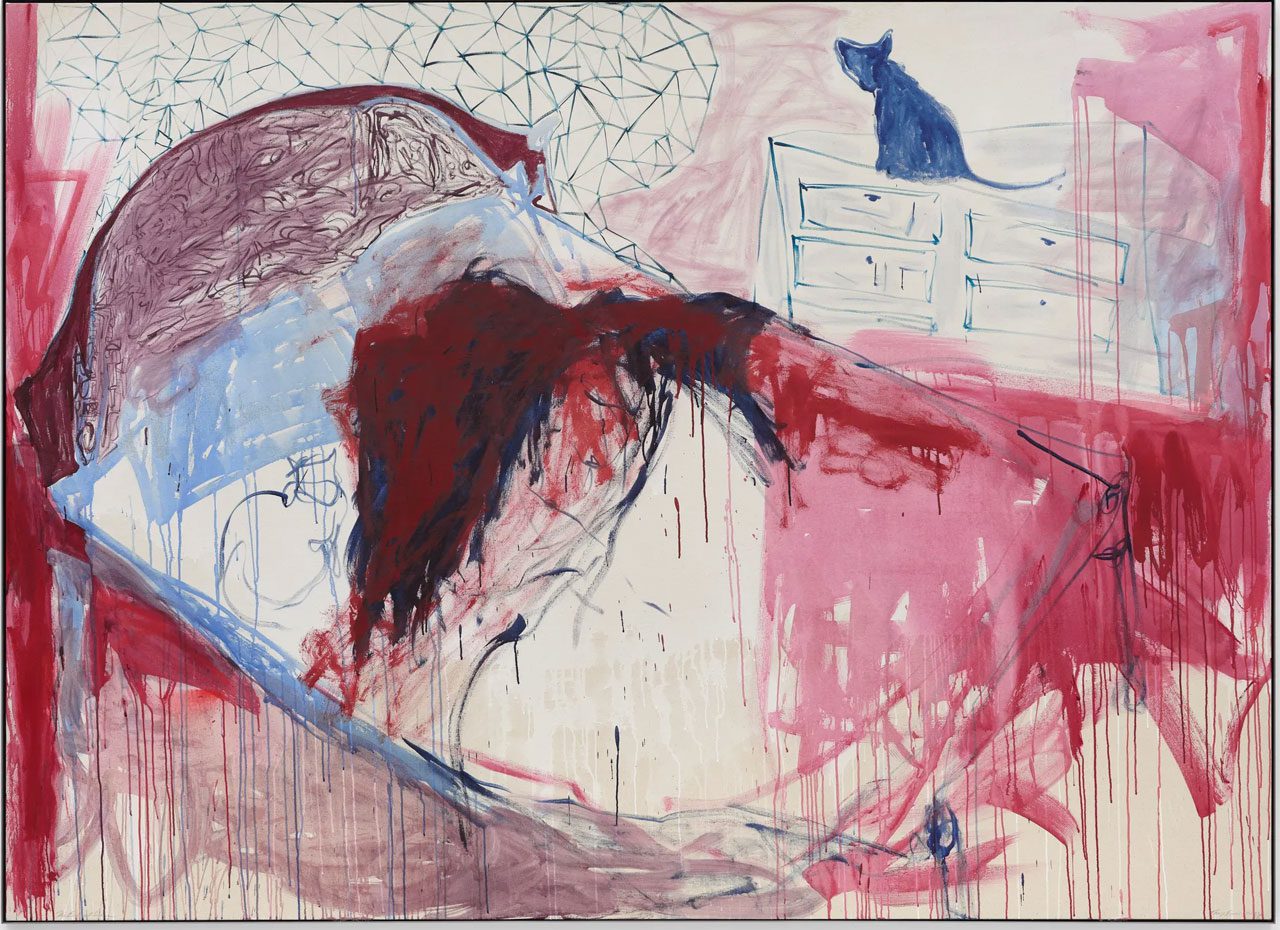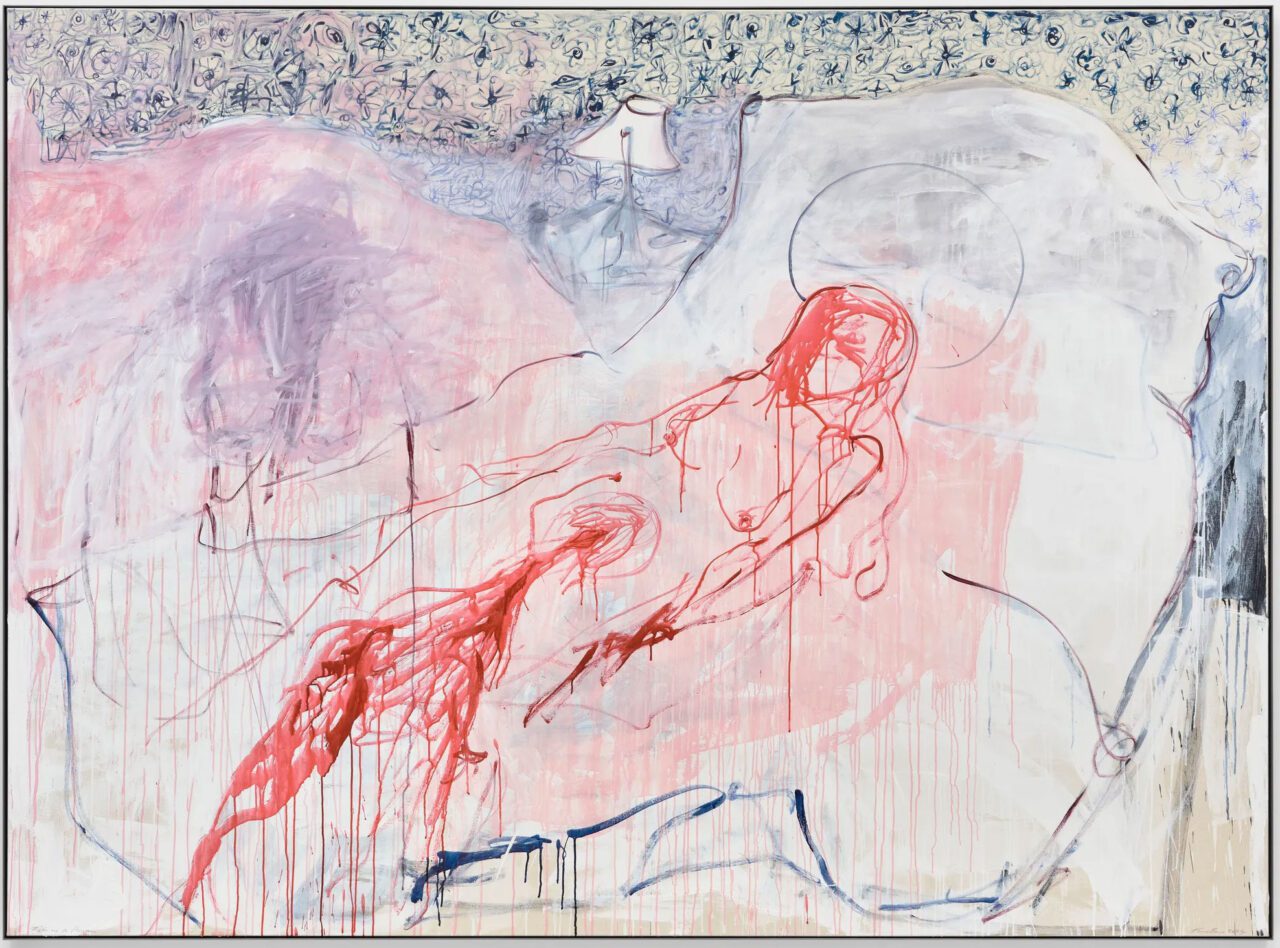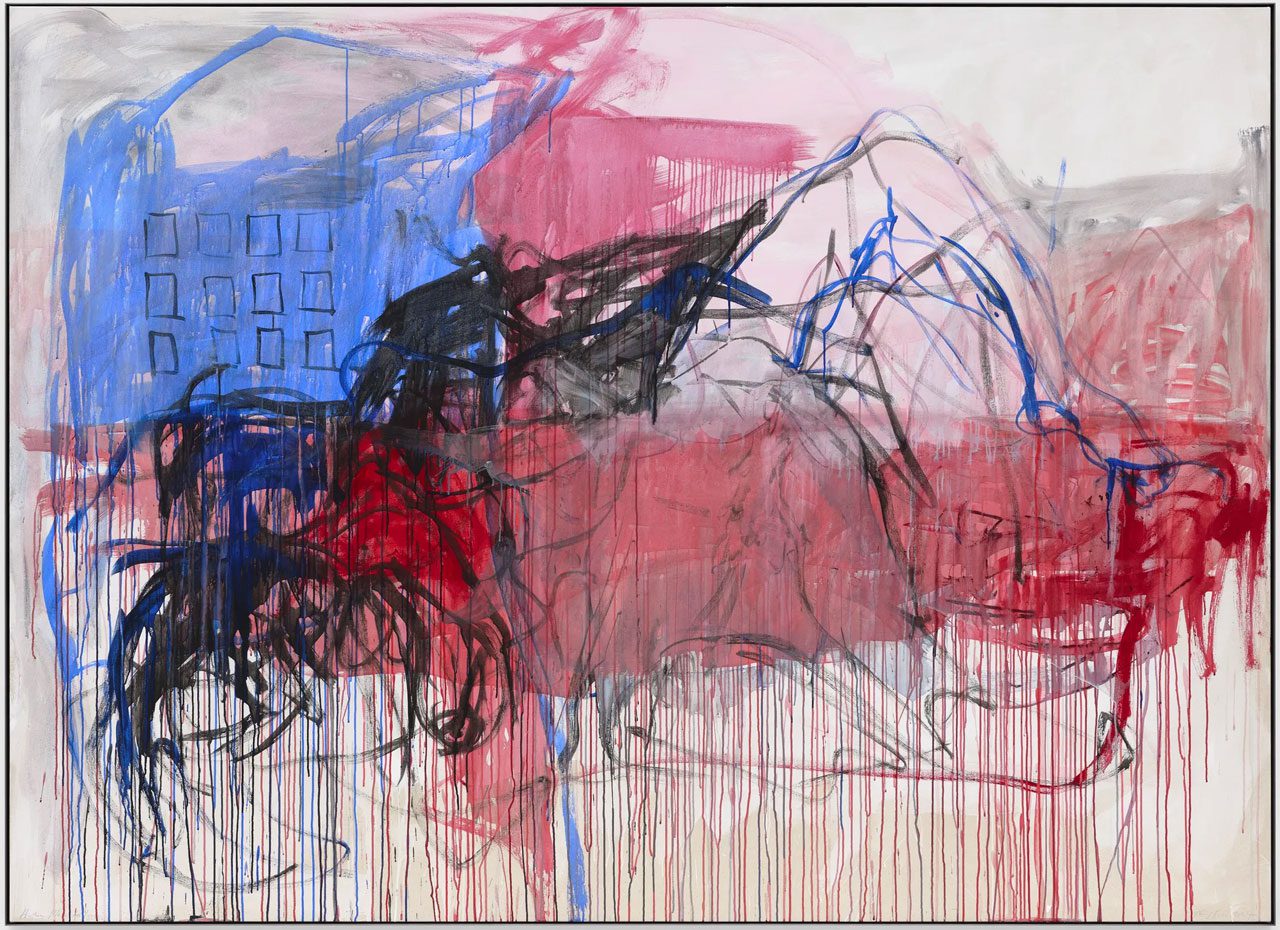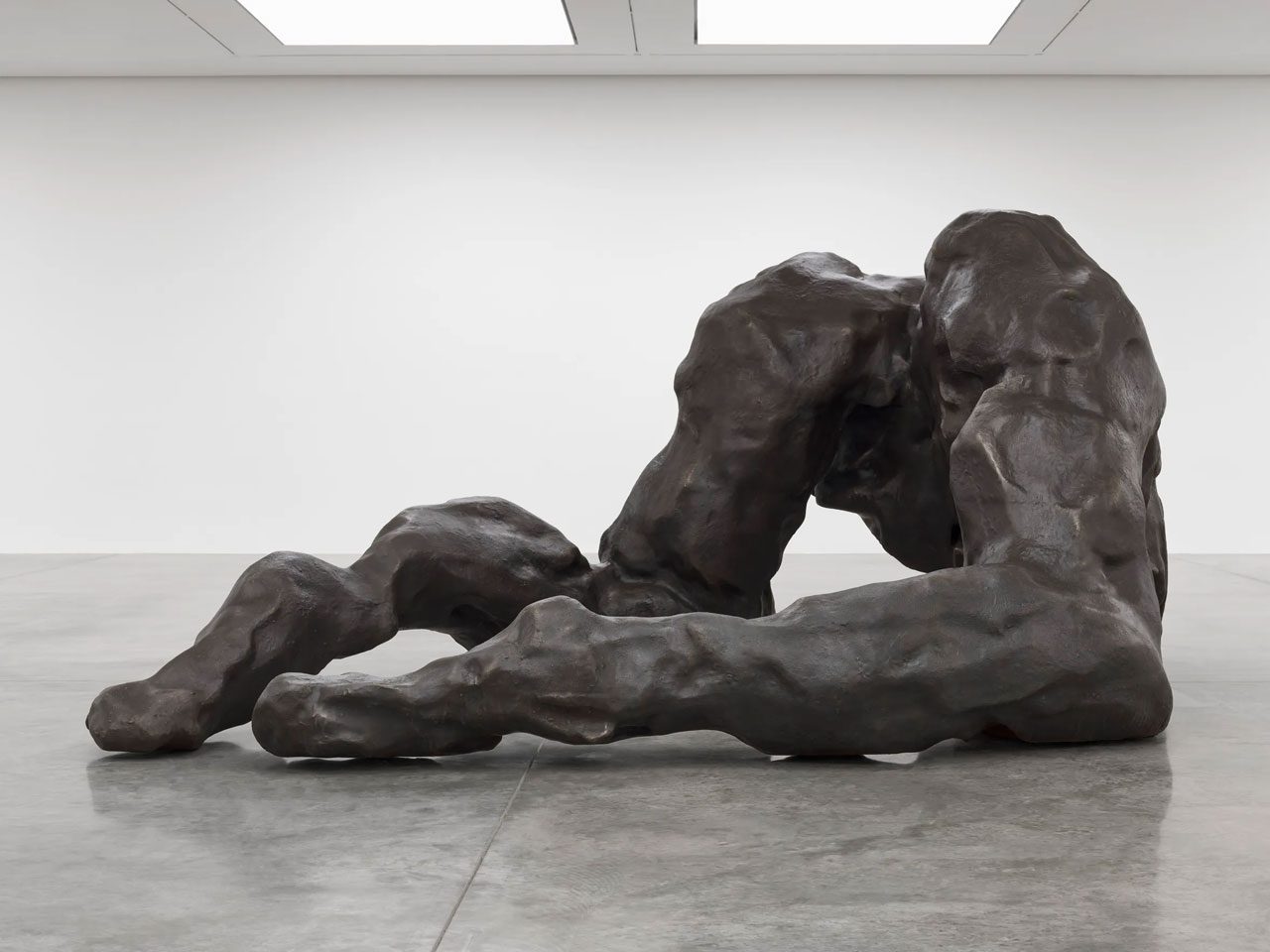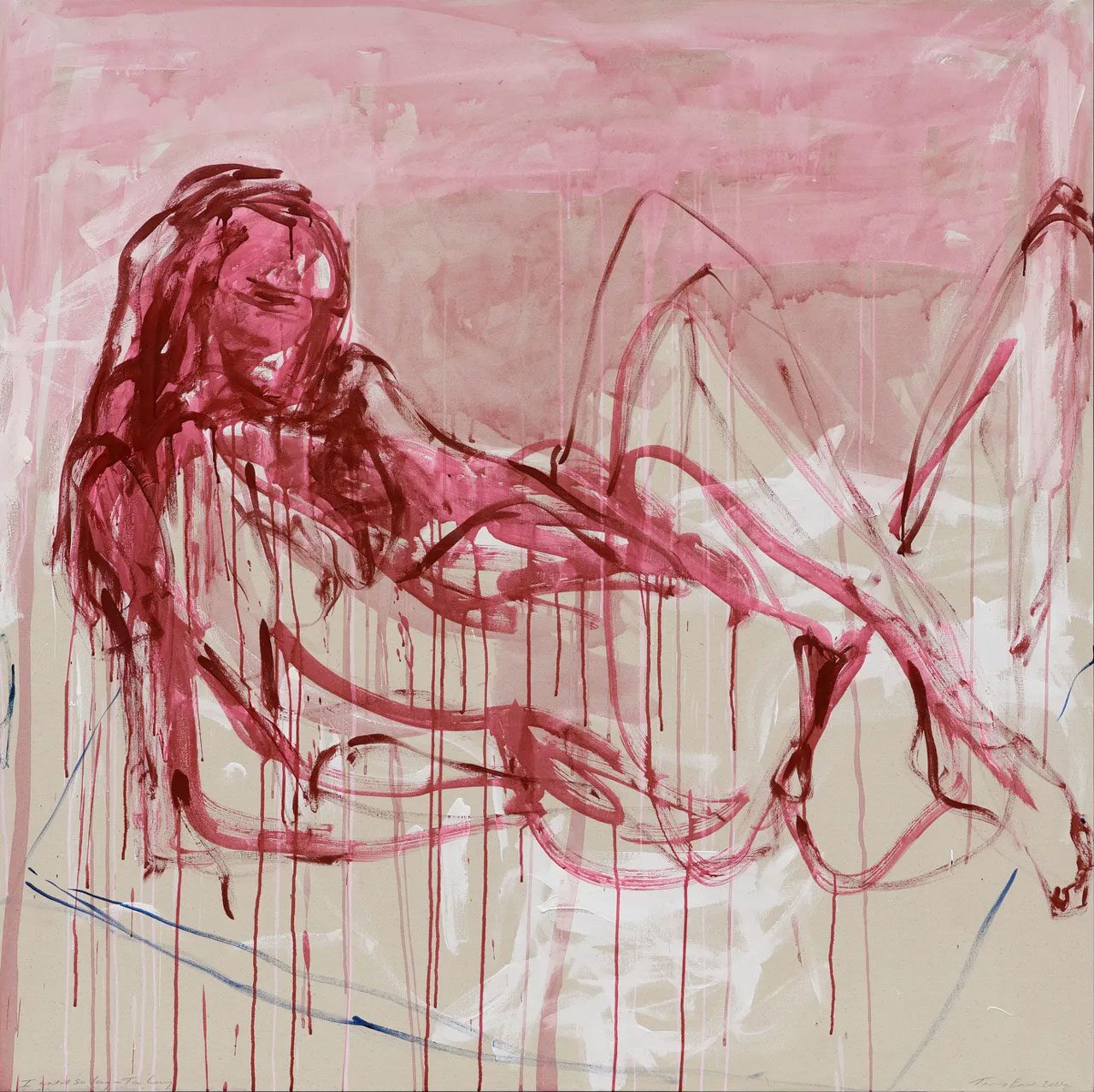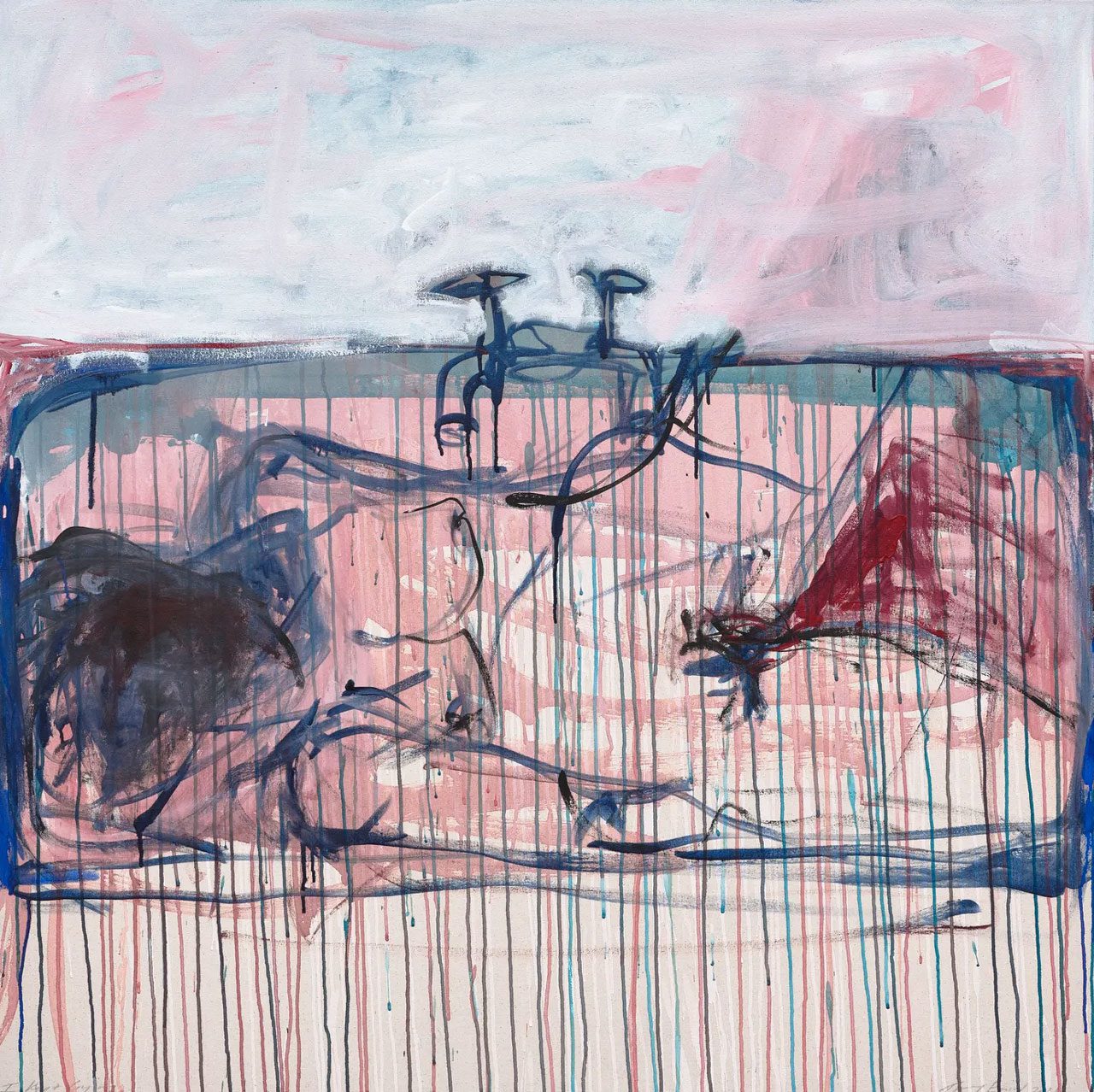PRESENTATION: Tracey Emin-I followed you to the end
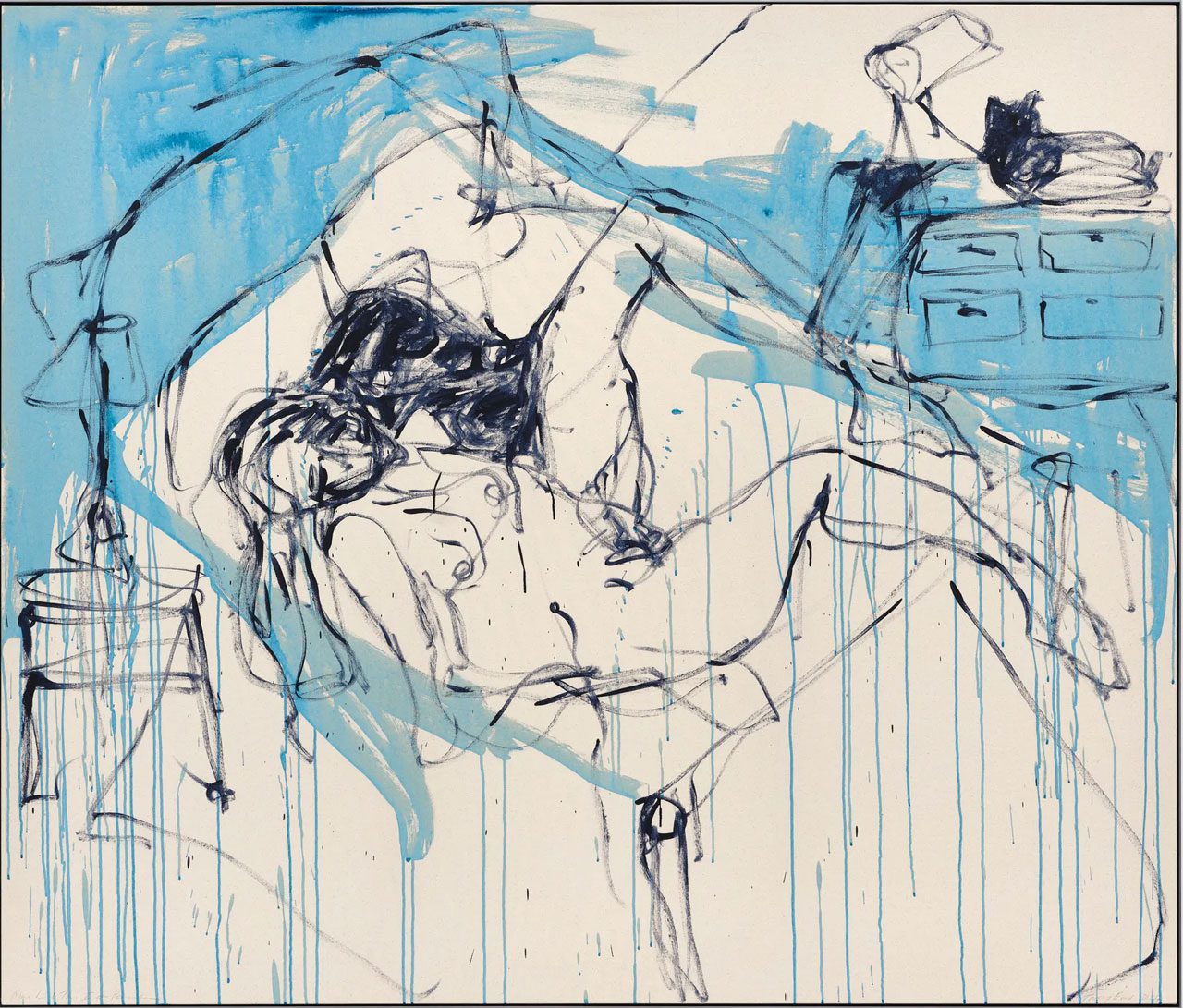 Tracey Emin looks to her life for her primary material. With soul-searching candour, she probes the construct of the self but also the very impulse to create. Unfiltered, irreverent, raw, she draws on the fundamental themes of love, desire, loss and grief in works that are disarmingly and unashamedly emotional. ‘The most beautiful thing is honesty, even if it’s really painful to look at’, she has remarked.
Tracey Emin looks to her life for her primary material. With soul-searching candour, she probes the construct of the self but also the very impulse to create. Unfiltered, irreverent, raw, she draws on the fundamental themes of love, desire, loss and grief in works that are disarmingly and unashamedly emotional. ‘The most beautiful thing is honesty, even if it’s really painful to look at’, she has remarked.
By Dimitris Lempesis
Photo: White Cube Gallery Archive
Tracey Emin’s solo exhibition “I followed you to the end”, is a presentation of new paintings and sculptures that journey through love and loss, mortality and rebirth. Drawing from a recent, transformative experience, Emin continues her exploration of life’s most profound and intimate moments, with renewed intensity. The exhibition celebrates Emin’s expressive painterly vocabulary, focusing on the medium that has occupied and engaged the artist in recent years. Deft, impulsive strokes capture figures in the throes of becoming, while a palette of carmine, ivory, deep blues and black temper the volatility of physical and emotional states with intervals of contemplation and stillness. Serving as a fulcrum for the exhibition’s psychical journey, the titular painting “I Followed you to the end” (2024) elicits the plaintive anguish wrought from the complexities of love. Bathed in a tempest of red and black, the outline of a solitary female figure is framed by a handwritten exhortation to the lovers that have mistreated her: “You made me like this. All of you – you – you men that I so insanely loved so much. You are the ones that made me feel so alone. All of you – each of you in your individual way. I – I – I – was at fault to keep loving you. Like a fool I followed love to the end. Like the sad haunted soul that I am, I followed you to the end”. From this wounded indictment, tensions emerge in other works, where the mourning of lost love is countered by a visceral drive for self-preservation. In the diptych “My Dead Body – A Trace of Life” (2024), the female subject lies supine, her pelvis thrust upward while her head founders beneath a crimson tide. This horizon line extends to the second canvas, where a passage avows: ‘I don’t want to have sex because my body feels dead’. Informed, in no small measure, by the artist’s recent confrontation with life-threatening illness, the work also speaks frankly of Emin’s personal reckoning with mortality. The private spaces that Emin’s subjects inhabit – beds and baths – transform into sepulchral vessels, securing the figure within. In “I Kept Crying” (2024), the figure, shrouded in a cascade of red paint, reclines in a bath that might also be read as a burial ground, with the taps transfiguring into crucifixes. Elsewhere, allusions to Charon, the ferryman of the Greek underworld, emerge in the red sails of “Time to Go” (2024) – a motif that, like many others, surfaced from the subconscious during the creative act. In several of the works, the veil between life and death is thin and permeable, a diaphanous threshold through which the artist’s figures appear to make contact with the Beyond. Likewise, Emin’s instinctive process involves veiling and unveiling: she often paints an image on canvas only to obscure it later with additional layers of white, leaving behind a spectral impression of the over writ form, as can be seen in “Take me to Heaven” (2024). Here, the subject assumes a tranquil repose, as if drifting into another realm. To the left, a pale lavender presence – conjured through this technique – appears beside the protagonist, serving as a proxy for the artist’s deceased mother. Depicted within a room adorned with blue floral-patterned wallpaper, the serenity of the scene is abruptly ruptured by a violent gush of red from the subject’s torso, wrenching the transcendent moment back to the immediacy of the present. Similar decorative motifs appear in works such as “The End of Love”, “More Dreaming” and “Our World” (all 2024), which draw inspiration from the intricate designs of Turkish rugs collected by the artist, who is of Turkish heritage herself. This patterning represents a different form of mark-making, one led by a meditative impulse as opposed to the frenetic and urgent fervour that often characterises her paintings. Influenced by the evocative interior domestic scenes of Edvard Munch, the settings within these compositions become as integral to the narrative as the figures themselves. Autobiographical markers are woven throughout, as in “The Bridge” (2024), where an undulating landscape – insinuated by the silhouette of a sofa – symbolically connects the artist’s two hometowns of Margate and London, with the sofa posts evoking the structural supports of the Medway Bridge. Emin approaches her paintings without preliminary sketches or a predetermined vision, engaging with the canvas as though it were a medium of divination, coaxing hidden truths to the surface through the process of painting. The images that emerge function as an interface, to resurrect former versions of the self; to revisit defining events from her life; to weave together the spectrum of her experience into an ever-present moment. A recurring motif in Emin’s recent work is intimately tied to the artist’s bodily reality. Following a diagnosis of aggressive bladder cancer in 2020, Emin underwent major surgery to remove the affected organ and a substantial portion of the surrounding abdominal organs. During the procedure, her ureters were rerouted to a surgically constructed passage in her abdomen. A candid video, filmed by the artist herself and displayed in the gallery’s auditorium, reveals in vivid detail the stoma she now lives with – a pulsing, sunset-red orifice that may be variously identified in the surgent valves, halos and potent reds that punctuate Emin’s paintings. Though painting has become increasingly central to Emin’s practice in recent years, she has continued to create sculpture, as evidenced by the two new bronze works featured in this exhibition. The smaller counterpart, Ascension (2024), presents a female torso in repose and echoes the figure depicted in “My Dead Body – A Trace of Life”, although mounted on the wall in a manner reminiscent of a crucifixion. The monumental sculpture, “I Followed You To The End” (2024), commands the central space of the South Galleries. At first glance, its form appears abstract, with textured ridges and dimpled impressions suggestive of a rugged landscape. Navigating around and drawing back from the work, the lower anatomy of a figure reveals itself, with sprawled legs ambiguously parted as tender invitation or brutal subjugation. With its deeply worked surfaces directly capturing the imprints from moulding by the artist’s hand, the sculpture evokes a sensuous intimacy that belies its vast scale.
Photo: Tracey Emin, More Love Than I can Remember, 2024, Acrylic on canvas, 182 x 214.2 cm | 71 5/8 x 84 5/16 in., 183.6 x 215.8 x 4.5 cm | 72 5/16 x 84 15/16 x 1 3/4 in. (framed), © Tracey Emin, Courtesy the artist and White Cube Gallert
Info: White Cube Gallery, 144 – 152 Bermondsey Street, London, United Kingdom, Duration: 19/9-10/11/2024, Days & Hours: Tue-Sat 10:00-18:00, Sun 12:00-18:00, www.whitecube.com/
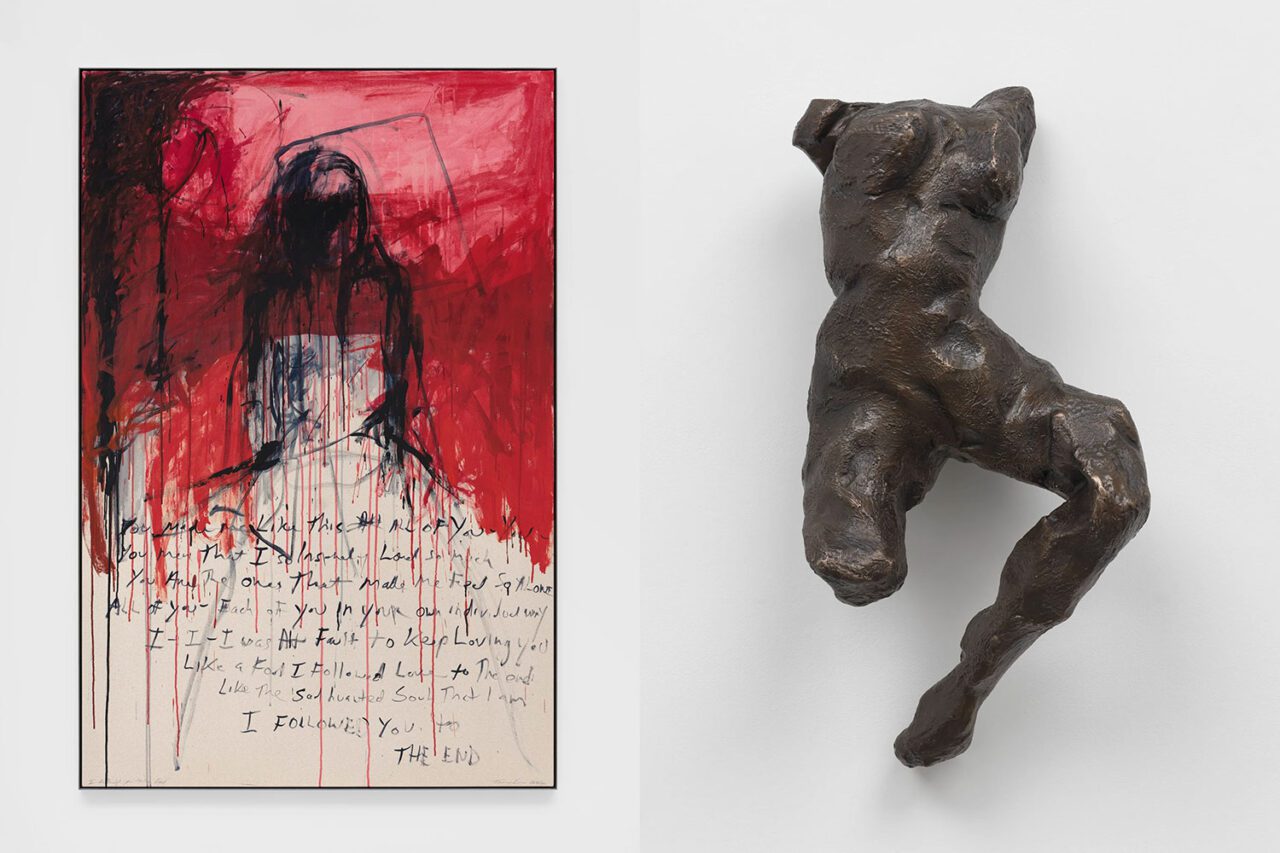
Right: Tracey Emin, Ascension 2024, Patinated bronze, Edition 1 of 3, 72.5 x 36 x 23.5 cm | 28 9/16 x 14 3/16 x 9 1/4 in., © Tracey Emin, Courtesy the artist and White Cube Gallery
